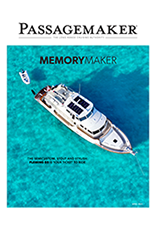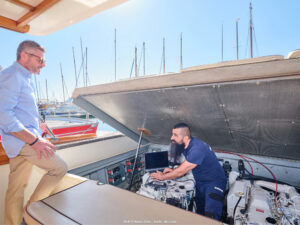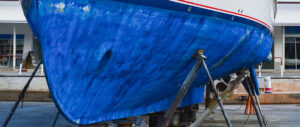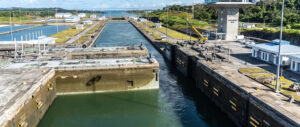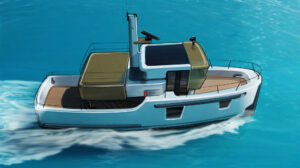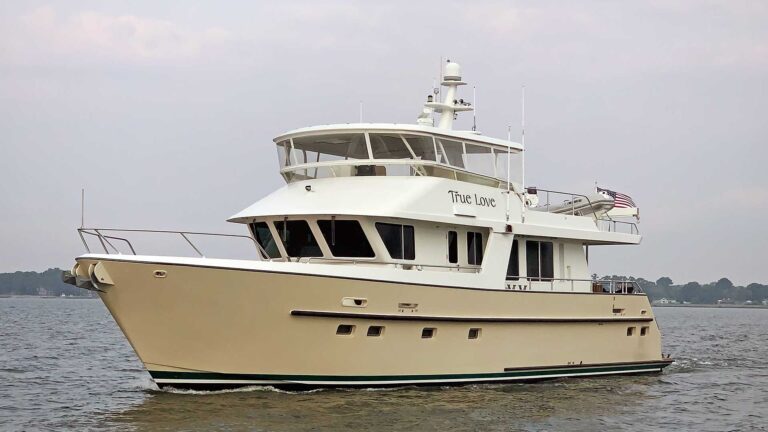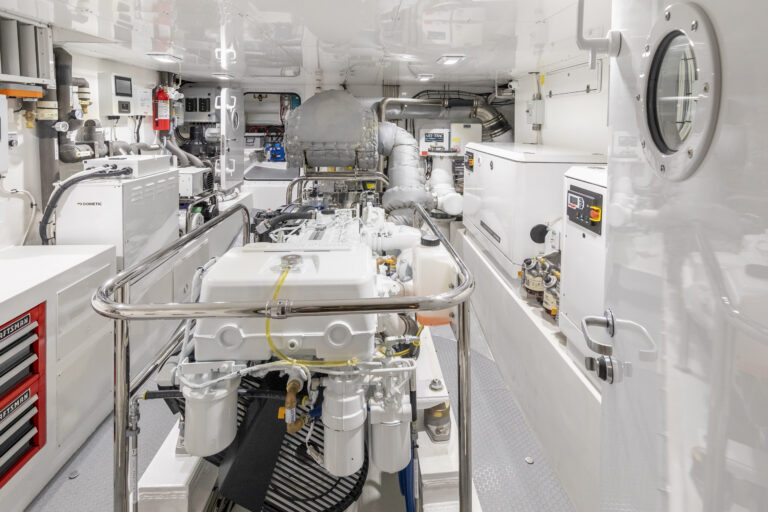If you search online for WD-40 uses, you will come across a bewildering array of ideas, including untangling jewelry, removing crayon marks, and chasing away spiders. Somehow, what I plan to use it for is never on those lists.
Fluids in cans fill an important role in a boat owner’s toolkit, and the variety of choices can be confusing. Gathering information for this article, I asked several of our boatyard techs for their preferences. I ran into a variety of opinions. (Shocking, right?)
Nonetheless, their choices coalesced around a few products that everyone should have aboard. Here’s a look at the top options.
Moisture Removal
WD-40 has been around since the 1950s, when it was created for corrosion prevention in the aerospace industry. The WD stands for water displacement, and the 40 refers to how many attempts it took to get the formula right.
WD-40’s chemical formulation and low viscosity make it ideal for removing moisture and protecting surfaces. I recently allowed salt water to spill onto an autopilot pump; after rinsing with fresh water and drying the area, I sprayed WD-40 onto the electrical and hydraulic connections.
CRC 6-56 competes head-on with WD-40, and they are similar products. Both help to remove moisture while providing corrosion protection and lubrication, especially for hard-to-access components.
However, neither product is the best choice for corrosion prevention and lubrication. CRC 6-56 gets the nod for corrosion protection, as it seems to last longer during exposure to salt water. Both products are highly flammable, though, and care should be taken in enclosed spaces. As for lubrication, these products’ low viscosity means that liquid tends to seep out gradually, and that they attract dust and grime.
Penetrating Oils
When you cannot loosen two parts, applying a penetrating oil can do the trick. WD-40 and CRC 6-56 will have some benefit, but other products such as PB B’laster, Kroil and Liquid Wrench are formulated specifically for this task.
PB B’laster and Kroil are favorites among our mechanics, with a nod toward Kroil. PB B’laster reportedly works by maximizing capillary action, while Kroil claims a formulation with a molecular affinity for metal—both of which help the chemical work its way into minute cracks and crevices. Kroil can be purchased in aerosol (AeroKroil) or liquid (Kano Kroil) form. Both perform well. In confined spaces, the liquid form produces far fewer fumes. Kano Labs created Kroil; the name is a play on “creeping oil.”

If the parts are dirty or rusty, remove as much material as you can with a wire brush before applying the penetrating oil. Apply your chosen fluid liberally and wait 10 minutes. If the part still won’t move, give it an hour. If that doesn’t work, apply some more and let it soak overnight. (In another column, we’ll explore options for removing stubborn fasteners that remain stuck even after an overnight soak.)
WD-40 and CRC 6-56 also work as penetrating fluids if the other products are not available.
Corrosion Prevention

While some of the products described above offer a measure of corrosion protection, they fall short compared to other options. More than 40 years ago, Boeing developed Boeshield T-9. It penetrates crevices and protects surfaces by leaving behind a waxy film that clings to the surface. CRC Marine Heavy Duty Corrosion Inhibitor also earns high marks.
These products can be applied over electrical connections or to protect steel hardware (engine mount studs, for example). They can be a little messy to apply, as the overspray tends to coat nearby surfaces.

Tef-Gel deserves a special mention. This product excels at minimizing corrosion due to dissimilar metals. Stainless fasteners threaded into aluminum, for example, should have the threads coated with Tef-Gel prior to installation. Tef-Gel also helps prevent the galling of stainless steel threads.
Lubricants
Manufacturers specify the proper lubricant for a given component, and that recommendation takes precedence over other options. With that said, lubricants fall into several categories: oils, greases and dry lubricants.
Oils, such as classic 3-In-1 Oil, work well went you want to minimize wear in small parts with close tolerances. Oils will be washed away if exposed to water, and they tend to collect dust and grime.
Greases basically consist of oils with additives to thicken the product, retaining the lubricity of the oil while adding stickiness to hold it in place. Grease will resist exposure to seawater. LubriMatic Wheel Bearing Grease performs exceptionally well in these applications. Cone-style seacocks will benefit from an application of this grease.

Dry lubricants, usually provided in spray form, consist of slippery lubricating particles. They lubricate well but will be washed away when exposed to water. These products fall in two groups: silicone or PTFE, which stands for polytetrafluoroethylene.
Silicone dry lubricants perform well for light-load applications such as sliding doors or door hinges. CRC Marine Silicone Spray provides a good choice in this category. Silicone products have two drawbacks: Dust clings to them, and any overspray will complicate subsequent painting or varnishing.
PTFE-based products (Teflon is a common brand name for this chemical family) include Super Lube, which is available as an aerosol or a grease, and which works well. Fried eggs don’t stick to Teflon pans, and the same is true for dust and dirt, giving the PTFEs an advantage.
Before lubricating any components, clean them well. CRC Brakleen does a great job of removing old lubricants and grime. Use it in a well–ventilated area, and wear a respirator and goggles for this job. This product is nonflammable, making it safer to use than some similar cleaners.
The Winners
The following list of our favorites is by no means comprehensive; many competing brands in each category work well. These products made the list based on their popularity in the boatyards.
For general purpose use: CRC 6-56 or WD-40.
For removing stuck hardware: PB B’laster or Kroil
For corrosion protection: Boeshield T-9 or CRC Marine Heavy Duty Corrosion Inhibitor and Tef-Gel
For cleaning grimy parts: CRC Brakleen
For general lubrication: Super Lube
For lubrication of parts exposed to seawater: LubriMatic Wheel Bearing Grease
If you have favorites you’d like to see on the list, we’d love to hear from you. Send a note to [email protected]
At a minimum, if you add the list above to your toolkit, along with manufacturers’ recommended products, you’ll be well prepared for your boat’s maintenance requirements.
This article was originally published in the November/December 2020 issue.
